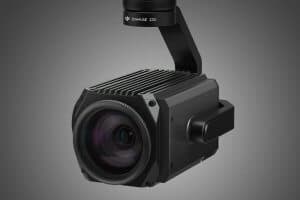Things to Remember When Shooting Your First Gold Coast Real Estate Videos
September 24, 2017A Brisbane Real Estate Photographer’s Guide to Features to Look for in a Drone
September 24, 2017All aerial photography drones need sensors. It is an important aspect of how the drone operates. Sensors will monitor the drone’s location, bearing, and speed.Also, sensors such as cameras will take photos or videos during a flight.
Visual Imaging Sensors
Let us start with the first sensor that comes to mind when you hear photography, the camera. As a ground-based photographer, you rely on cameras, such as the Blackmagic Pocket Cinema
Camera, Canon 5D, RED EPIC, and the Sony Alpha 7s, to take great photographs.
As an aerial drone photographer, you need quality drone cameras, such as the DJI Zenmuse X5, DJI Zenmuse X5R, and the Panasonic GH4.
What features should you watch out for in a camera? You should get a camera with a high resolution. If you do not end up shooting in 4K, a high-end camera will likely allow you to reduce the resolution. A camera with a large sensor is also a must.
Inertial Measurement Unit
In combination with the gyroscopes, accelerometers, and magnetometers, the IMU (Inertial Measurement Unit) determines the drone’s g-forces, orientation, speed, and flight direction. The IMU gathers the information from the mentioned sensors (gyroscopes, accelerometers, and magnetometers) and feeds this information to the flight controller. With this information, the drone’s flight controller (the computer inside the drone that runs the flight control programs) controls the flight.
Accelerometer & Gyroscope
The accelerometer measures the acceleration of the drone. This is measured in g-force or meters per second squared (mps2). The gyroscope measures the angular velocity. This ensures that the drone remains stable.
Tilt sensors which are a combination of both the accelerometers and gyroscopes ensure the drone maintain a level flight.
GPS Sensors
GPS sensors are important devices in the modern world. They are found in our cars, phones, personal computers and almost all gadgets and equipment we move around frequently. GPS sensors determine our location on the earth by communicating with Earth-orbiting satellites. GPS sensors provide the drone’s position. This information is important when the drone is on autopilot or on a preprogrammed flight. GPS which stands for Global Positioning System has a huge role to play in regulating drone flights. Through systems like geo-fencing, it is possible to ensure that GPS enabled drones do not enter no-fly-zones such as airstrips and airports.
Proximity Detection Sensors
Many high-end drones have sensors that ensure they avoid collision with objects in their path. Features such as Obstacle Avoidance are used to market many high-end drones. These sensors ensure the drone does not land roughly, nor crash into trees, and other obstacles. This is a plus since high-end drones are usually expensive. Drones such as the DJI Phantom 4 and the Yuneec Typhoon H have these proximity detection sensors.
Conclusion
Here is a rundown of the sensors you are likely to find as you start your drone aerial photography Brisbane journey.
Other sensors such as thermal imaging cameras and infrared sensors, are also in use especially for UAV mapping tasks, and inspections. They can be used for surveillance, crop and forest health surveys, and pipeline leak inspections and so on. Current sensors and engine intake flow sensors are also used to monitor power consumption and flow in many drones.
However, the discussed sensors are the most important sensors all drone operators need to be acquainted with.

